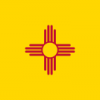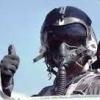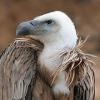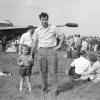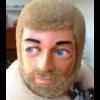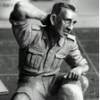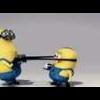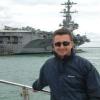Search the Community
Showing results for tags 'USN'.
-
I'm joining with Flagship Models' 1/72 USS ALLIGATOR. This was the US Navy's first submarine. The design by Brutus de Villeroi was unusual. It used oars for propulsion, had a snorkel with an air purification system, and an airlock for a diver. She was launched in May 1862. Her first sorties were to take place in June 1862, but were cancelled when the conditions were judged unsuitable for operations. By July 1862 the oars were replaced with a hand-cranked screw, raising her speed to 4 knots. Her next sorties were to take place in April 1863, but she foundered and sank during a storm off Cape Hatteras while being towed to Charleston, SC. Here's the starting bits. 22 resin parts, chain, brass wire, and plastic rod. Those are some serious rivets! But, they look appropriate to the era. The model portrays ALLIGATOR in her as-launched oar-powered configuration. Some serious clean-up is in store... I built Flagship Models' 1/72 CSS HUNLEY some years ago. The kit built nicely Here's my interpretation of HUNLEY's spar torpedo:
-
My house is packed up for a move (to somewhere, who knows?), along with the kit stash, books and many of my tools. A perfect time to start a build! I needed a kit that would be easy to build with the shoebox of tools that I spared from long term storage just in case the whole moving process took long enough to require them. Good call past Cookie - I really owe you one this time. This 1/72 Academy Helldiver from the USS Randolph during Operation Iceberg caught my eye. The boxart also provided a theme for a multi-build - the British Pacific Fleet played a large role in Iceberg, and this affords the opportunity to build a couple of FAA subjects that have been on the list for a long time: A Corsair IV from the HMS Formidable, and the two BPF Indomitable based Hellcats featured in the Eduard dual-combo boxing. Oh, and I'm planning to add an Essex based F4U-1D Corsair for good measure. This could turn into an @Beard level never ending build.
- 251 replies
-
- 10
-

-
@jimmaas, and also@Antti_K, So as to not sway the previous topic discussion too far off-course, your comments got me to thinking, as I am working up the courage to come out of retirement and doing a Buffalo herd is a really attractive prospect. Seeing as how you are highly regarded as the go-to guy for all things Buffalo, I would like to run this by you before I start bending and gluing plastic- did I get these observations anywhere near correct? Help me, Obie-Wan! (After consulting my copy of the Ginter F2A book.) I've got multiple boxings of the Hasegawa, Special Hobbyy. Matchbox, and Airfix 1/72 kits, if that helps. (I'm thinking a Finnish B-239, a Marine F2A-3, and an RAF B-339-E) F2A-1: R-1820-24; oal 26' 5" F2A-2: R-1820-40; oal 25' 7" (exhausts moved higher up and angled back more than the -1; length of the cowling reduced by 5" forward of the firewall compared to the -1) F2A-3: R-1820-40; oal 26. 5" (fuselage extended 12" forward of the wingroot; additional 40-gallon fuselage tank added that blocked pilot view through belly window, so it was deleted. B-339D/E: R-1820G-105; same dimensions as the -2; four .50cal guns, extra landing light; faired-over tailcone; RAF Mk III gunsight; fixed pneumatic tailwheel; clear vision panel added to the LH forward panel of the canopy; Sutton or U.S. Harness? Finnish B-239's: same as the F2A-1, as 44 of them were sold to Finland in December, 1939, when the USN agreed to give up delivery in order to receive F2A-2's all naval equipment was removed- arresting and catapult hooks; telescopic gun sight, life raft container behind seat; barrier arresting guards on the landing gear struts; Revi gun sights fitted upon re-assembly and erection in Finland. Did they retain their USN seat harnesses?) Thanks in advance! Mike
-
This is the Italeri F-5N as an ex-Swiss Air Force Tiger now serving as a USN Adversary. To be honest, there’s not too much to say about this nice little kit: it goes together really quickly and, other than the addition of an Eduard Zoom set, a Pavla ejection seat and a bit of work to give some sort of representation of the complex canopy opening mechanism, it is pretty much from the box including the decals, which also include some nice Swiss and Austrian markings.
-
This month's fascination has been a pair of Vietnam-era A-4 Skyhawks. First up was a Hasegawa A-4F from USS HANCOCK, then an Airfix A-4B from USS INTREPID. The Hasegawa kit I've built several times before in different markings, but the Airfix kit is new and I was pleasantly impressed (just as well as I have a few more in the stash!). As always, the kits were brush painted using Humbrol enamels (127 & 130), then a Klear coat for decal application, then an oily wash, finished by a coat of Windsor & Newton acrylic matt. A-4F VA-15 Warhorses - 1973 - USS HANCOCK Yankee Station A-4B VA-15 Valions - 1967 - USS INTREPID - Dixie Station .. and finally, my Skyhawk fleet to date! FredT
- 15 replies
-
- 35
-

-
- 1/72
- A-4 Skyhawk
-
(and 1 more)
Tagged with:
-
US Navy Modern Tow Tractor (198432) 1:32 VideoAviation.com The US navy need a low profile tug to move about on carriers. The current STT (Shipboard tow tractor) is the A/S32A-32. This also provides a mobile platform and fuel source for an engine air start unit the MSU-200NAV The Kit It arrives in videoaviation's standard white box with a drawing on the lid. Inside the tractor body is the main single part which requires no clean up. The rest of the parts are all in separate bags. To start 6 tie down points are attached to the main body of the tug, then in the driver area instrument consoles, foot controls and the steering wheel are added. The seat is also then added. Hubs are attached to the wheels and then these can be put onto the main body. Grills and lights are added along with the main rear tow hook Stencil decals can then be added. To finish off the figure can be used if wanted. Conclusion If you're placing any of your models on a base, adding ancillary equipment is a great way of enhancing realism. Highly recommended. Review sample courtesy of
-
Just stumbled upon this video while looking for something else- natcherly! Amateurish video, to be sure, but the BPF Corsair footage was very nice. Hope you haven't seen this one before- enjoy! Mike https://www.youtube.com/watch?v=rNcV13uayxw
-
This Grumman Wildcat was my very first Tamiya kit. I finished it in 2011 and I have to say that all I had heard about its ease of construction was pretty much true. The upper side color is Model Master medium gray enamel and the lower color is MM gull gray. I used the Tamiya decals and had no trouble with them. I did make some seat-belts and did a bit of detailing on the engine. The portly little Wildcats held their own until more advanced types arrived to help out in World War Two. I've always liked their pugnacious look too. Here are a few pics of the Wildcat, taken at the Cameron airport not long after completion. Thanks for stopping in and having a look! Gary
- 15 replies
-
- 28
-

-
USN Deck crew Videoaviation 1:32 The latest releases from Videoaviation.com are these sets of figures and equipment. Two sets are of US Navy, one with modern figures and a trolley filled with metal cases, the other from the Vietnam era with two figures and a trolley filled with what look like bomb fuses. The sets are manufactured in the standard creamy beige resin which is really well moulded and detailed. [187232] US Navy Deck Crew Maintenance – This set contains two figures, one kneeling, one standing, both with separate arms, heads and a pouch for the kneeling man. The kneeling figure also has a speedy drive for opening up a panel. The set also includes a twelve piece Aero 12C trolley which includes two small and three large metal boxes as load. ; [187532] US Navy Deck Crew Vietnam – This set contains two figures, both standing, one with both arms and head separate, who is meant to be holding a fuse in his hands and one with just one separate arm and separate head. The set also includes a nine piece trolley which includes two pallets of bomb fuses as a load. The chap with the fuse is meant to be a red shirt ordnance man, while the other is a green shirt, maintenance man. Unfortunately each of the sets the instructions don’t come with colour photographs of the crewmen and equipment, but show the completed items and the callouts are written down with pointers to the appropriate items of clothing and equipment parts. Conclusion Videoaviation continue to release great sets to add life to your large scale dioramas, are superb. The added crews and equipment will be especially useful, just add your model with a bomb trolley, and bombs with their fuses removed for that great looking diorama. Review sample courtesy of
-
OK, Korean war aircraft fans- check out these color photos! Very nice 8th FBG and 51st FIW photos, too. Some very nice modeling possibilities in this bunch. I hope you enjoy them. Mike http://www.axis-and-allies-paintworks.com/e107_plugins/forum/forum_viewtopic.php?354
-
Hi again all, I've slipped back to Phantoms for another brief journey in to my memory bank and slide files. This time I get away from the Nation Guard and sample the U.S. Navy reserve and U.S.M.C. Reserve. These were taken, again early morning, around the Dallas Naval Air Station and cover the three based F-4 units. Like my visits to the ANG site the units were preparing for the morning's operations. The Marines had just started to get active as my mate and I got to their ramp. As always I hope you like them.
- 18 replies
-
- 24
-

-

-
Right calling this one finished and off the shelf of doom!! The Fujimi A-7 is reckoned to be the best in 1/72 but this one fought me all the way and was very very close at one stage to taking flight in the direction of the nearest landfill! a71 Maybe I had a bad moulding but one fuselage half seemed to be fractionally bigger than the other resulting in a nasty step all the way round top and bottom. That needed lots of frenzied sanding resulting in fine engraved panel lines and blade aerials vanishing in clouds of plastic and filler dust. Also the inside of the intake looked like it was shortshot - unless it was moulded to look like a SAM had gone off in there! a76 Talking of the intake, this is nice and deep unlike other A-7 kits in 1/72, but one has to make a choice. It comes in two halves and you can either glue them together first allowing the seam down the middle to be easily cleaned up and then attach them to the fuselage - where they don't quite fit, or fit each half to the fuselage and then poke about in the intake with a cocktail stick wrapped in sandpaper for half a lifetime. I opted for the latter. I had to make my own tail "sting" as the kit had an earlier style which was not correct for this aircraft. a75 Paints were Xtracrylix LGG over Citadel white, but I am giving up in the Citadel white as although it covers nicely it is just too damn fragile. I may try one of the new Humbrol acrylics next USN build. The blue is a Model Master enamel FS15102 True Blue which I believe is the correct FS for this aircraft. The enamel sprayed like a dream thinned with white spirit and in an ideal world I would junk all my acrylics and replace them with these but for the almighty stink caused by cleaning up the airbrush. a77 The tips of the ejector racks were brush painted and again the MM enamel went on beautifully with no brush marks. The rather nice markings for VA-303 (which I think is a second line squadron) came from an old Microscale sheet. As I am finding out these old sheets annoyingly don't seem to include the marking on the wing tops and because of the highly stylised "ND" used by this squadron I had to scratch around for an alternative. There are other errors on the sheet like the "300" on the nose should be in an italic style font etc. I ended up buying another Microscale sheet and used a tail marking from another scheme with more or less the correct size of "ND". The size and position of the "300" on the wing is bit an educated guess as I could find no clear pics showing this. a73 Hope you like!!!! a72 Pat
- 20 replies
-
- 28
-

-
These Corsairs are part of an ongoing build regarding joint British Pacific Fleet (BPF) and USN operations in the last few months of World War II, beginning with Operation Iceberg and ending with carrier raids on the Japanese mainland itself. Both are from the 1/72 Tamiya kit. The BPF Corsair IV (Goodyear FG-1A) had to have the wingtips clipped and I added tiny fuselage vents - kudos to your eyesight if you can pick them out. Here's my traditional attempt at matching one of the reference pics. The 'X' on the tail denotes that this Corsair was based on (edit - thanks @Grey Beema!) Formidable, but I think the reference pic was taken on the USS Intrepid (the US carrier with the most British sounding name). The paint is Colourcoats Glossy Sea blue (WWII version), post-shaded with a little light grey added to the airbrush cup. The USN half of the pair is an F4U-1D with the 'diamond butterfly wings' Geometric markings belonging to the USS Essex. The over spray on the markings was on purpose, believe it or not, and was quite a challenge to reproduce. I couldn't find a reference pic for '185' so I based the markings and weathering on these two pics of Essex Corsairs. Paint is Colourcoats again, but post-shaded with Lifecolor acrylics. Here they are alongside the first completion of the project, a 1/72 Academy Helldiver. The Helldiver RFI can be found here. Off to start on the next triple, two BPF Hellcats and a Seafire.
- 26 replies
-
- 42
-

-
Well, I'm calling this finished. This is the Revell boxing of the Dragon USS Independence CVL-22. This has been hanging around for many years waiting the opportunity to get it finished. No major modifications were done to the basic kit except for etched details from the Gold Medal Models set for USN CVE/CVLs. The model is finished with Lifecolor acrylics. Thanks for looking!
- 16 replies
-
- 28
-

-
This my Meng Models 1/700 USS Lexington. When I bought this I hadn't realized it was a snap-together kit but to be honest it builds very quickly into a reasonable model of this distinctive carrier. The model was built straight out of the box with little modification. I used the kit as a bit of a practice piece as I hadn't completed any naval subjects for a while. I can't comment on the accuracy of the kit or indeed my interpretation but I enjoyed the build and finishing. All the paints are Lifecolor and the only changes are the aircraft decals have been taken from a GMM set (the kit supplied marking are self-adhesive, nicely printed but a bit toy-like). Thanks for looking! Cheers
- 12 replies
-
- 20
-

-
Evening all, was back at work today but did finally manage to get this beauty finished over my days off this week. AFV Club F-5N straight out of the box. I do have a PJ Productions pilot to drop into the pit shortly and I did have to replace the AFV Club decals with a set of Two Bobs decals, fortunately for an aircraft in the same colour scheme! A bit disappointing the the kit decals didn't play ball but the quality of the Two Bobs sheet kinda made up for it. Main finish done with Tamiya acrylics airbrushed, details done in Vallejo acrylics. Klear used before and after decalling and weathering done using with Promodeller Dark dirt wash, Tamiya smoke, pastels and silver pencil. Photo's taken outside with my trusty phone so hope the pics are up to scratch, nose pitot probe lasted less than 30 secs!! Will replace it with a section of needle I think. Hope you like! I'm in love with her 😉 Eng
- 13 replies
-
- 29
-

-
Good evening, Had the opportunity to flash up the airbrush today now that the kids are back to school and this weeks shifts are done! I've had this AFV Club F-5N pretty much since the kit was released but it stalled after I put the first of the colours on it. Today I've managed 2 rounds of fiddly masking and painting, oh how did I ever put up with Xtracrylix in my airbrush, Tamiya forever now! I have just managed a first coat of Klear as well before retiring for the evening. After another coat of Klear I'll be looking to decals this bad boy aggressor, but wondered if there's any issues or things to watch with AFV Club decals as I haven't used them before. I'd normally use Microset/sol or Klear, how do AFV decals react to Microset/sol? Quick pic for those interested (I have progressed the KH Su-17 as well but that's for later!) Eng
-
US Navy Deck Crew Videoaviation 1:32 [165032] the latest release from Videoaviation.com is this set of a USN Deck Crew, a set of five figures for your big dioramas. Two of the set have been previously released, namely the crewmember with chocks and the one with holdbacks. The other three crewmembers, two shooters as a fly operator are all new moulds. The set is manufactured in the standard creamy beige resin which is really well moulded and detailed. Crewman with holdbacks - The crewman’s body, head and legs are moulded as one part, with the arms moulded separately. The holdbacks, of which there are six in the box, are moulded on separate blocks, but only by a couple of points , so should be too difficult to remove without breaking them. They can be attached to the crewman’s hands or if you are doing a launch diorama can be fitted between the deck and the aircraft. Deck Crewman with associated chocks - The crewman body, head and legs are moulded as one part, with the arms moulded separately. The chocks are in five parts, two parts for each chock and the fifth for the bar. Shooters – A mostly a single piece figure kneeling on one knee with a separate arm, one shooter pointing, the other with his thumb up. The Fly Director – This is another single piece figure with a separate arm outstretched. Unfortunately the instructions don’t come with colour photographs of the crewmen showing the standard flightdeck uniforms. Instead the call-outs are written down with pointers to the appropriate items. Conclusion This is another very useful set for those modellers who like to build dioramas/vignettes with their large scale models. This set is certainly the one to get even if you have bought the previous figures. Review sample courtesy of
-
Airfix 1:72 Wildcat build almost OOB with kit decals -After pre shading, all paints were as given in the instructions except the upper surface which Airfix gave as HU125 and was replaced by my own mix 5xHU125 5xHU127 2xHU25 to make USN M-485 -I tried blending in the lower windows with CA (A Phil Flory technique) then sanding and polishing once cured, Think I need some practice in this as the vapours got on the inside and did what CA vapours do. I wont write off the technique just yet. - Rudder decal was discarded and rudder painted with Tamiya white primer and HU 153 - Decals applied with MicroSol & MicroSet. - Model was given a coat of Humbrol Gloss Cote prior to decals, clay washes, oil dot weathering & Tamiya wethering masters then matted with Humbrol Matt Cote. - Aerial rigging was done with 0.12mm fishing line secured with UV cured glue (UV glue really makes this job so much easier) then tightened by holding a soldering iron near. - Kit jury stays were discarded as too thick and replace with lengths of Plastruct 0.3mm rod. Please forgive the stand its just a bit of printed paper blue tacked on to a unpainted base just for the pictures. Enjoy CT Thanks for looking Mark
- 21 replies
-
- 49
-

-
Hi all, Can any of you out there recommend, or direct me to, a good US Navy font download. I've found a few by Googling but most if not all seem to be a gateway to something quite different! Thanks in advance. Martin
-
Backstory: The Hellcat was never intended to be the mainstay of the USN fighter force, as the F4U Corsair, with its generally superior flight performance, was intended to be the Fleet's premier fighter. However the ineradicable problems with the latter's deck landing performance prevented it from being fielded on even the large USN Fleet carriers. Even then, the need for a successor to the F6F-3 in advance of the advent of the F7F and F8F was not widely appreciated. However, despite the US blunting the advance of Imperial Japan in a series of major sea and land battles during late 1942 and early 1943, new and improved types were coming into service with both the Japanese Army and Navy, particularly the Ki-84 Hayate and A7M Reppu. Pre-war Japanese naval attaches sent grave reports home regarding the awesome industrial potential of the US and Japan acted on these reports, developing a series of massive underground production facilities. They also developed advanced production methods, rewarding factory line workers for their ideas to improve efficiency of production and indeed design improvements. Their military was not exempt from changes, too. The recognition that pilot training needed expanding and improving was also acted on, together with increased cooperation between the IJAAF and IJN. The net result of these policies was an improvement in both quality and quantity of Japanese aerial opposition by late 1943, together with increasing losses among Hellcat units. Grumman resolved to tackle the shortfall in key areas of Hellcat performance and developed an effective response in the Grumman F6F-7, conceived in a phenomenally quick time and deployed in combat for the first time in late 1944 . . ." The F6F-7 incorporated a Wright R-3350 engine of 3000hp combat rating, an improved 'bubble' canopy and revised armament of 2 20mm cannon and 2 0.5in machine guns. The machine shown below is my interpretation of the famous #155 of Cdr Roger Hedrick, CO of VF-84 based aboard USS Bunker Hill. It is depicted as at the beginning of the 2nd battle of Saipan in November 1944. Hedrick, and #155 were fortunate to have been airborne escorting a TBM strike when Bunker Hill was sunk by shore-based Judy dive bombers, which had evaded the CAP, which was fully engaged the Ki-84 escorts. Unfortunately, although Hedrick was able to recover safely aboard the USS Wasp, #155 was unceremoniously dumped over the side to make space for Wasp's own aircraft. The model was based on the Eduard F6F-3 Weekend edition, with bits from the Airfix Skyraider, the NT Airfix P-51D and a Matchbox Tempest II. It was built as part of a "what if" GB on another forum, and the link to the build thread is here: http://uamf.org.uk/viewtopic.php?f=311&t=11040. Mods, I'm not sure if linking to a build thread in another forum is within forum rules / etiquette. If not, either delete or ask me to do same. regards, Martin
- 15 replies
-
- 22
-

-
We have the latest products from Infini Model from South Korea arriving tomorrow, plus restock of the hugely popular cutting mats and lycra rigging line The new additions are: Imperial Japanese Navy, United States Navy and Royal Navy inclined ladder sets, all in 1/350 scale: US Navy radars (including turned brass parts) in 1/350 IJN Type 96 anti-aircraft guns in single, double and triple mounts (including turned brass barrels) and various ammunition boxes in 1/350 And last but not least, the full range of lycra rigging lines in white to compliment the black which we already carry.
-
- Infini model
- IJN
-
(and 4 more)
Tagged with:
-
First one off the bench for 2016, Airfix new tool Wildcat. I waited for the Starter set as I preferred the colour scheme and markings in this boxing. A lovely wee kit to put together, the only fiddly bit being the gear on the gear down option, but well thought out by Airfix. Paints were Tamiya White and dark sea grey (slightly lightened) for the main scheme, and Vallejo and Humbrol for the detail bits n pieces. Decals were straight out the box, there's only about 18 of them. Weathering was with Flory's dark grey wash, acrylic washes and then pastels after the first Matt coat, these were sealed in with another light Matt coat. Only thing I'm not 100% happy with was the canopy framing, some of the paint chipped off when removing the masking, but in 1/72 I ain't going to try and touch this up! Photo's are off the iPhone so not the best, but hope you like it, it's one slightly (very, very slightly!) closer to clearing my stash! Rgds, Eng
-
I've always fancied making an all black Korea bird, or a late Vietnam Electric wizzy, wither USN or USMC. (Also used by the US Army too, but details are scarce to say the least. I suspect test aircraft only?) Can I safely assume the Sword release has been abandoned? So that leaves: 72: Matchbox or 48: Encore A choice between an old kit in my preferred scale) or an expensive one. I know there are issues reported with the fit of the matchbox canopy, and lack of cockpit detail is pretty much a given, so a rare trip to the aftermarket will be likely to achieve food results. Have I missed anything? If I stumble across a MB kit is it still worth the effort considering the lack of competition (note: whilst I don't mind basic detail I don't want to be filling trenches)
-
US Navy and Air Force GBU-38 Bombs Videoaviation 1:32 A very welcome pair of releases from Videoaviation arrived at BM Londons offices the other day. Two sets of GBU-38 JDAM bombs in 1:32 scale, one of US Navy style and one US Air Force style. Each set is very well protected, being contained in a clear plastic box, within a zip lock bag wrapped in bubblewrap. Although the bomb lugs need a bit more as a couple in the review sample were broken. Each box contains eight complete bombs, and come in these separate parts. Bomb Casing Tail Lugs GPS Antenna Protective caps Decals Whilst the tails, lugs, caps are the same for each type, the USN bomb casing is a much rougher casting allowing for the ablative coating used on Navy bombs. It is details like this that make Videoavition products to be some of the best in the business. Naturally, the USAF bomb casing is nice and smooth. The extreme nose sections are also slightly different between versions, with the USAF version being a more pointed affair than the USN type. The builds are pretty straightforward, as once the parts have been carefully cut away from the moulding blocks they will only need a swipe with a sanding sponge before the tail is attached to the casing, followed by the lugs and the tail mounted GPS aerial. If the protective caps are to be used, then the nose of each bomb needs to be used before the cap can be fitted. Each type comes with its own distinct style of markings contained on a nicely printed decal sheet. Conclusion These two sets make very nice additions to the Videoaviation product range and will add something special to a completed model. With the well moulded, flawless resin, it should go together fairly easily. Once built and painted they will look great, although it would have been nice if some remove before flight flags had been provided too. Highly recommended. Review sample courtesy of

